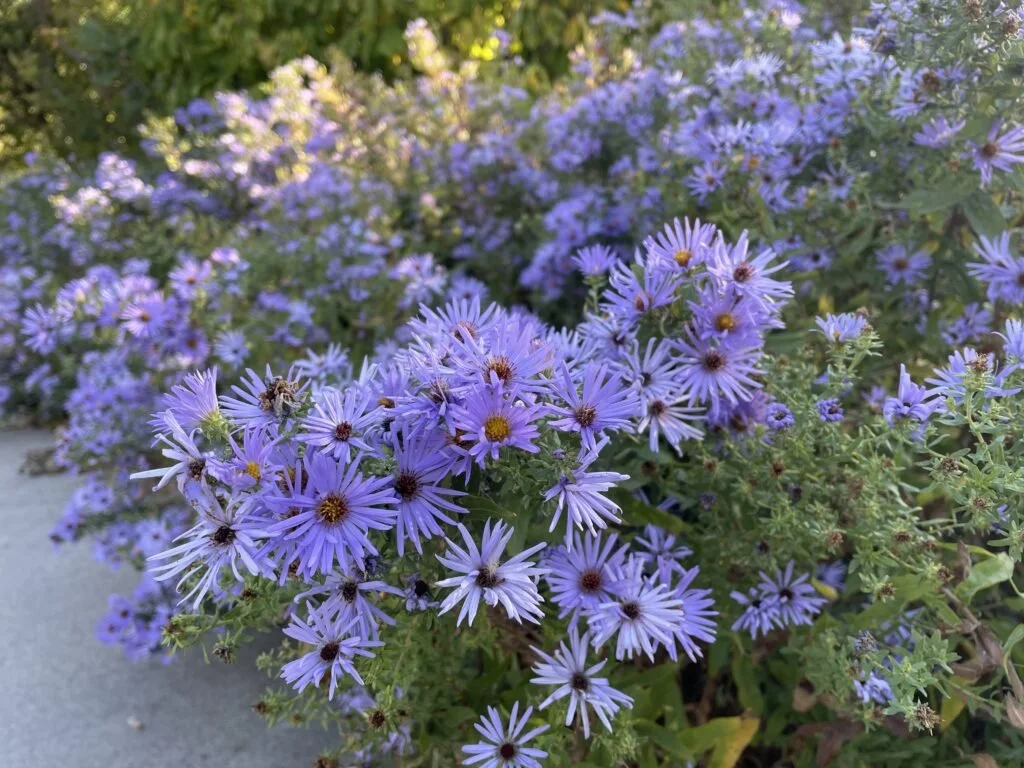Species Profile: Aromatic Aster
Common Name: Aromatic Aster
Scientific Name: Symphyotrichum oblongifolium
Location: Native to Central Texas prairies, rocky slopes, and open woodlands. Found in well-drained soils, often in full sun and dry conditions.
Mating Habits: Aromatic aster is a perennial plant that reproduces sexually through pollination. Insects transfer pollen from one flower to another, enabling seed formation. It also spreads vegetatively by rhizomes.
Seasonal Habits / Bloom Time: Blooms late in the growing season—typically September through November—making it one of the last nectar sources available for pollinators preparing for winter or migration.
Ecological Relevance: Provides critical late-season nectar for butterflies, bees (especially native solitary bees), and migrating insects like the monarch. Its dense growth habit helps stabilize soil and prevent erosion.
Interesting Facts:
Named for its faintly aromatic foliage, which smells when crushed.
One of the most drought-tolerant native asters.
Compact, bushy growth makes it a favorite in native plant gardens.
Native Wildlife Associations: Attracts butterflies like the American Lady and Monarch, native bees, and other beneficial insects. Seeds are eaten by songbirds.
Conservation Note: Planting aromatic aster enhances fall pollinator habitat and adds seasonal color to native landscapes. It thrives in low-maintenance, xeriscape gardens and restoration projects.

